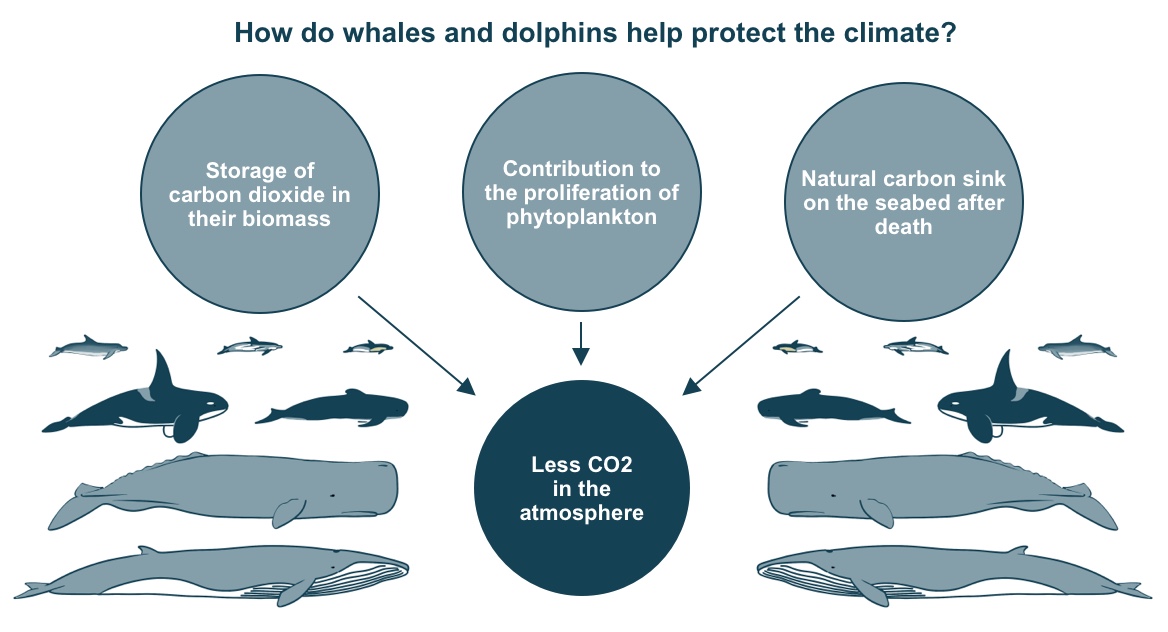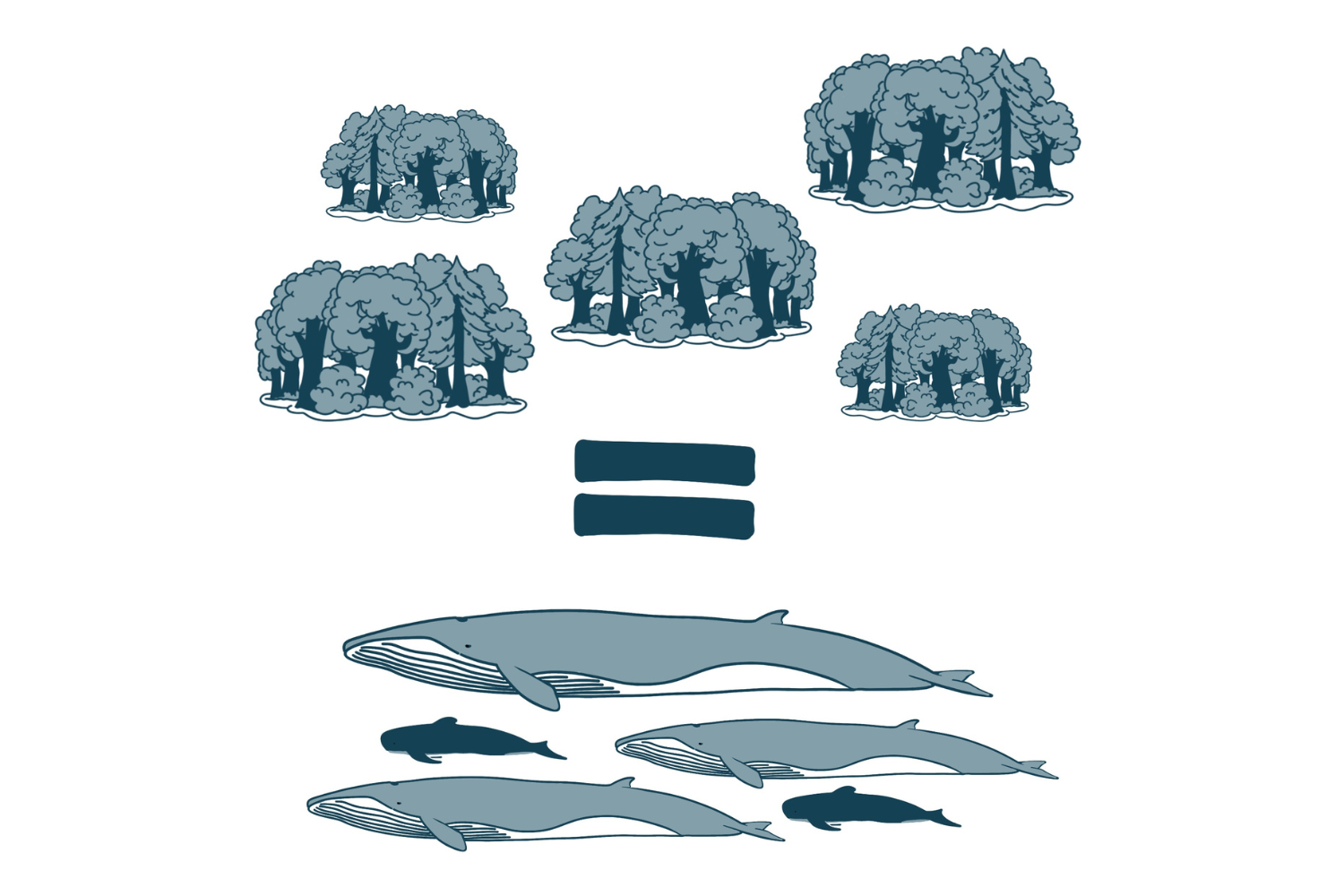In the wake of looming threats posed by climate change, various studies are drawing attention to the great added value of marine mammals in terms of climate protection. These show, for example, that whales and dolphins, as well as other marine creatures, make an important contribution to the long-term storage of carbon in the deep sea and to stimulating CO2 uptake from the atmosphere.
Carbon stores in cetaceans
During the lifespan of any marine inhabitant, carbon is stored as one of the main components of the body’s cells. Since whales (and dolphins) are among the largest living creatures in the world, with life spans ranging from several decades to a century, the biomass of these sea creatures alone stores vast amounts of carbon that have been removed from the global carbon cycle.
It’s estimated that the removal of large parts of the whale population during the industrial whaling era transferred approximately 23.5 million tons of carbon from the oceans to the atmosphere. This corresponds to about half of the CO2 emissions in Germany due to industrial processes in 2021.
Today, the biomass of the global marine mammal population is about 76% less than before industrial whaling began . This effect has probably been further exacerbated by the fact that the largest whales in particular have been hunted, reducing the average size of different whale populations. Restoring the blue whale population in the Southern Hemisphere alone would store as much carbon in its biomass as a forest the size of Los Angeles.
Supporting the conservation and population building of fin whales, sperm whales, pilot whales, orcas and dolphins (such as bottlenose dolphins and also smaller marine mammals such as the common dolphin which lives in large schools), would drastically reduce the global CO2 budget.
This, in turn, would have a positive effect on climate protection, stop ocean acidification and warming, a circumstance that is especially hard on marine mammals but also on other marine life.

CO2 and phytoplankton
In addition, marine mammals contribute to the proliferation of phytoplankton through their way of life. In the oceans, phytoplankton not only serves as an important food source for zooplankton and thus also for fish, it also binds large quantities of CO2 from the air at the sea surface as part of photosynthesis.
The migration of large marine mammals, especially baleen whales, transports nutrients via their excretions from nutrient-rich feeding grounds to the often nutrient-poorer reproduction areas of the animals.
There, these in turn stimulate the growth of phytoplankton and thus the development of nutrients, habitats but also CO2 sequestration.
In addition, research shows that sperm whales bring large amounts of iron near the surface through their excretions. In areas such as the South Pacific, where plankton growth is limited due to iron deficiency, this leads to an increase in the plankton population, which benefits the entire ecosystem.
Plankton, in turn, according to the German Marine Foundation and Statista, represents about 98% of the global biomass in the ocean and is thus also one of the main drivers to sequester CO2.

Carbon after a whale’s death
Provided that marine mammals eventually die a natural death at an advanced age, they sink to the bottom of the deep sea after their demise, where their carcasses sustain entire ecosystems of deep-sea organisms and form their own biotopes.
The carbon sequestered in the whale’s body is thus also stored on the seafloor for many millions of years and makes an important contribution to the balanced CO2 budget on our planet as a natural carbon sink.
Unfortunately, not all animals die a natural death. To the extent that animals are hunted, injured or killed by overfishing and increasing maritime traffic, or even taken into captivity for human amusement, they cannot fulfil their end-of-life role in protecting our planet.
Even whales that become stranded due to noise or plastic pollution and die on land cannot sustainably remove amounts of carbon from the CO2 cycle.
How can we help?
- Support the rebuilding of whale and dolphin populations on a global scale
- Reduce the number of whales and dolphins in captivity
- Curb global legal and illegal whaling
- Raise global awareness of the climatic added value of whales and dolphins
- Protect the migration of whales and dolphins to distribute nutrients e.g. phytoplankton
- Reduce noise pollution to prevent disorientation, loss of communication and stranding of animals
- Free whales and dolphins from “ghost” nets and other man-made debris to prevent disorientation and stranding of animals
- Reduce diesel and gasoline engines from ships and boats for cleaner oceans
